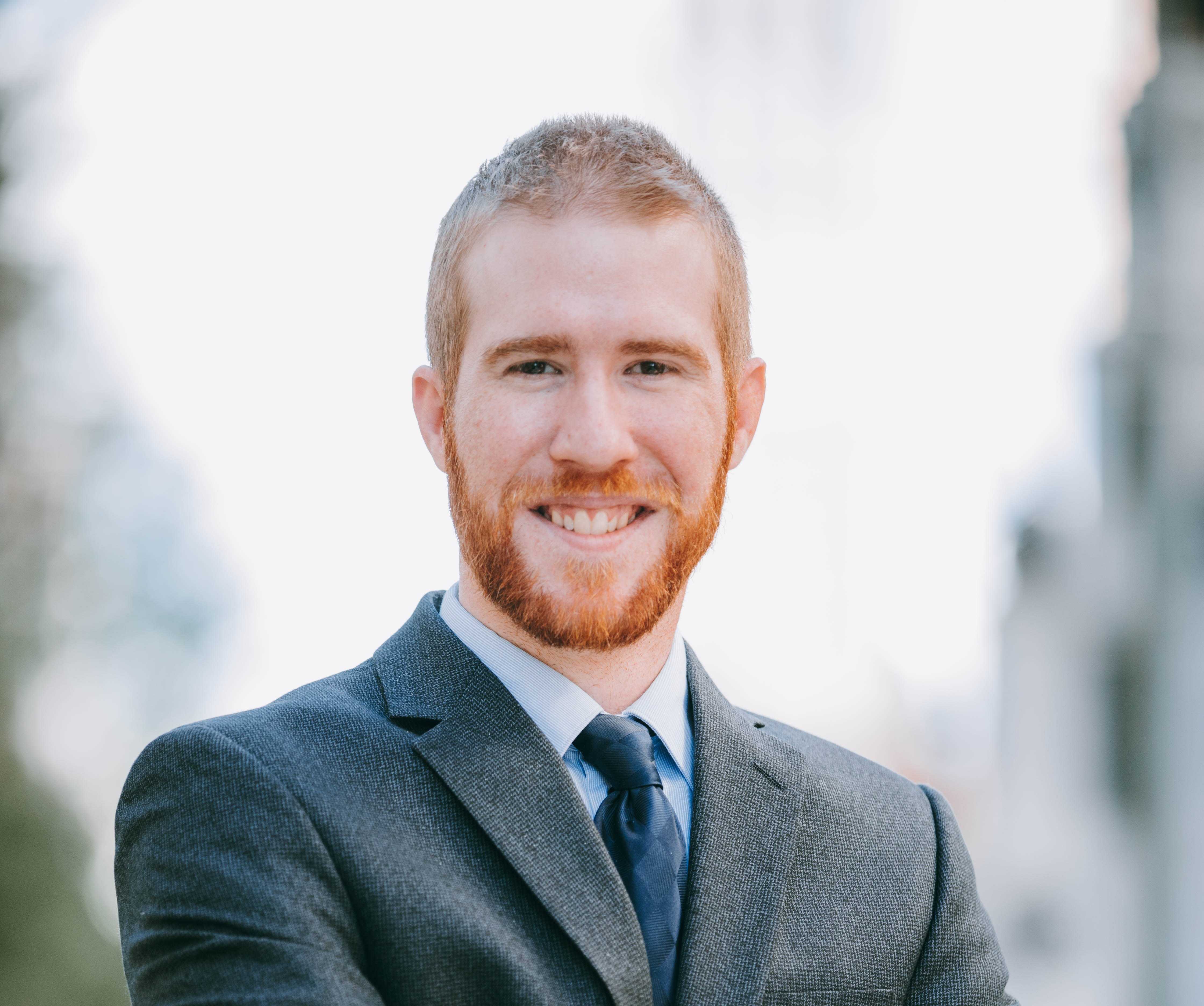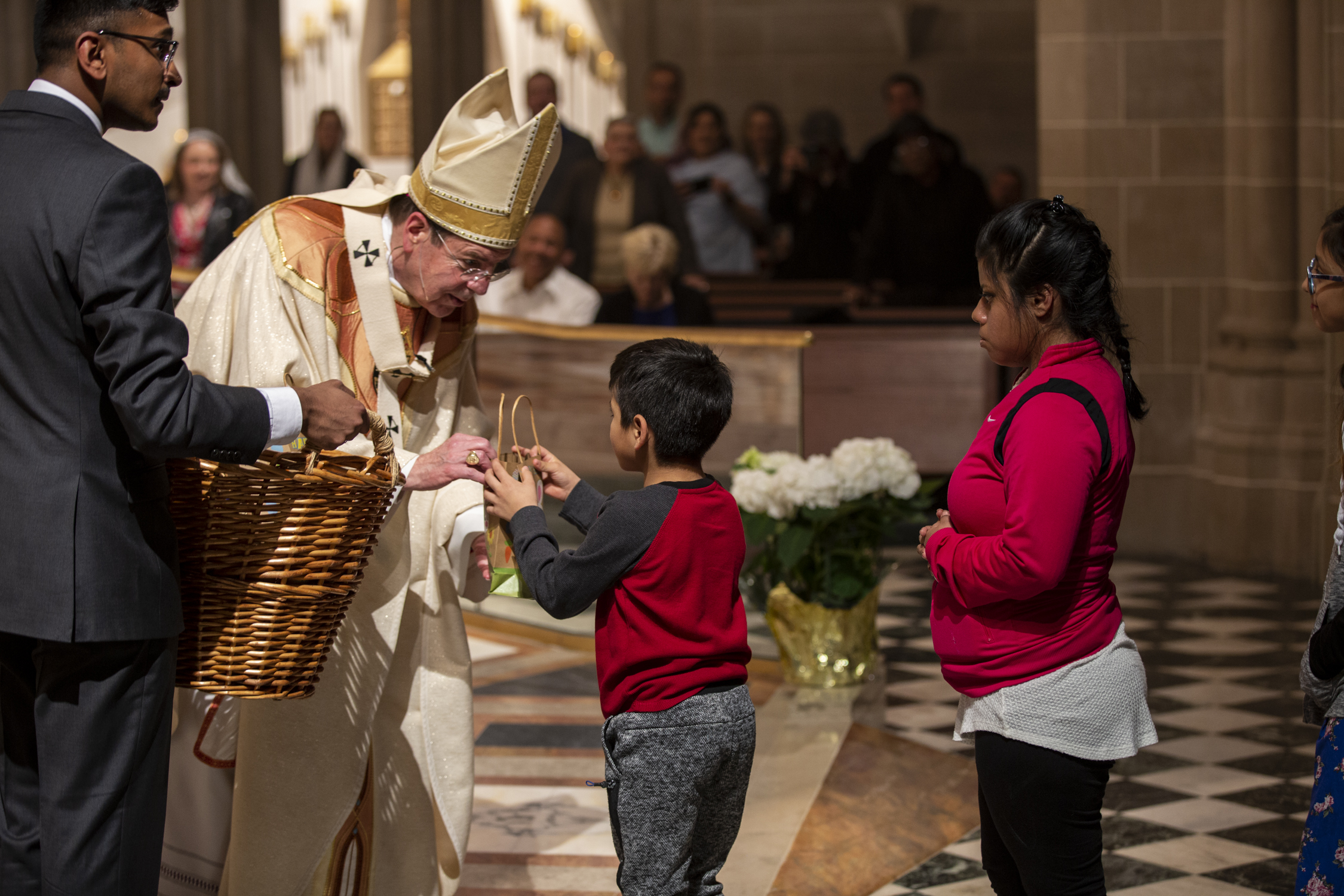At Easter vigil, chief shepherd announces ‘new and more intense phase’ of archdiocese’s push to ‘unleash the Gospel’
DETROIT — At fourteen minutes to midnight on Holy Saturday, the bells pealed across Woodward Avenue and down the quiet city streets surrounding the Cathedral of the Most Blessed Sacrament.
It was the moment of consecration, and as Archbishop Allen H. Vigneron held up the Body and Blood of the Lord for the whole congregation to see, it was as if the whole world paused in awe and wonder.
Jesus Christ, the one who was dead, was alive.
The stone was rolled away. The tomb was empty. And the Lord was again in the midst of his Church.
“What a blessed night for all of us,” Archbishop Vigneron said at the Easter vigil, the most solemn celebration of the Church’s liturgical year.
It is a great blessing “to be renewed in our baptism of grace as we make our paschal, our Easter holy Communion,” Archbishop Vigneron said, “to eat his flesh and drink his blood so that we will rise from the dead. We will be with him forever.”

Across the Archdiocese of Detroit, parishes welcomed hundreds of new Catholics into the Church’s fold, celebrating the sacraments of baptism, confirmation and first Communion.
As Archbishop Vigneron stood over the baptismal font at the cathedral, he poured water over the heads of Natalie Escobar, Garian Cook, Maliah Cook, Jaire Cook and Ny’Asia Milan-Brock, welcoming them into new life with a thundering voice: “I baptize you in the name of the Father, and of the Son, and of the Holy Spirit.”
Only God and his angels knew the exact moment of Christ’s glorious resurrection on the first Easter Sunday morning, a fact that itself is a grace to the Church, Archbishop Vigneron said.
“There are no eyewitnesses to the very rise,” Archbishop Vigneron said. “And so, in some sense the Church, in keeping vigil, expects to be part of that unknown hour, and mystically, sacramentally through the signs of the sacred liturgy, to be on watch. Not to miss that hour, lest we miss the grace, because this night is filled with grace and blessing. It is indeed the most blessed of all nights.
“For you catechumens and candidates, is that not true?” Archbishop Vigneron continued. “This most blessed of all nights by which you take all the new life that God offers to you, He has had in store from the beginning of creation.”
After baptizing the five, Archbishop Vigneron then confirmed them along with three others and anointed them all with the sacred chrism oil, just as the women who discovered Christ’s tomb empty had intended to anoint Christ’s body.

“Imagine how heartsick and hopeless they felt,” Archbishop Vigneron said of the women, Mary Magdalene, Joanna and Mary the mother of James. “When Christ was alive, many times they had attended him and offered him service. And so this gesture to the dead body of Jesus had a terrible poignancy. It certainly was an office of love, but it must have struck them as pointless.”
However, upon finding the tomb empty and two men — “Luke calls them men but surely they were angels,” the archbishop said — standing near the entrance, the women were greeted with a question: “Why do you seek the living among the dead? He is not here, but he has been raised.”
“Imagine the revolution, the topsy-turviness of hearing that question,” Archbishop Vigneron said. “You thought he was dead. You saw him. You marked the place where he was buried. But he's alive. This question makes everything different. They’re wrong; what they have felt all the way as they walked out of the city to the tomb, was an error. What a blessed error to know that they were not there to anoint the corpse, because he's alive.”
While today’s Christians know how the story ends — with Jesus alive, not dead — it’s still easy to allow oneself to “seek the living among the dead” either in pleasure or power, or in simply “gritting our teeth and bearing” life’s difficulties.
“We sometimes feel tempted to think that the sadness, the sorrow, the tragedy, the difficulty of our lives is final and that's all that there is,” Archbishop Vigneron said. “So we’re called to renew our faith. But we're also called, like the women, to put our faith into practice.”

Archbishop Vigneron said the women’s reaction to the good news of Christ’s resurrection — to run and quickly tell others — is a model for the Archdiocese of Detroit’s campaign to “unleash the Gospel” in modern times.
“This is our goal, the goal the Holy Spirit set for us, that we would move from maintenance to mission,” Archbishop Vigneron said: “To be on mission, like Mary Magdalene, and Joanna, and Mary the mother of James. To tell others of the resurrection of Christ.
“Our community needs this answer to the question,” he continued. “You look around and you see all the ways people seek to blunt the tragedies of life, to deal with them, and all of the misery that comes from these false answers. But the world needs to know what Mary Magdalene, and Joanna, and Mary, the mother of James, and the whole Church has said: that Christ is risen. He's not in the tomb.”
In the months ahead, the Archdiocese of Detroit will move into a “new and more intense phase of our movement to unleash the Gospel,” the archbishop said, one that will “help all of our parishes to become missionary and alive.”
This next phase of Unleash the Gospel, which began with an archdiocesan-wide synod in 2016, will mirror the synod process in “prayer, formation, reflection and action,” Archbishop Vigneron said.
“We want everybody who meets our parish, and who is associated with us — all our relatives, friends and neighbors — to find the life that we have found,” Archbishop Vigneron said. “To find the answer to the question that we have found: the answer about not looking for the living one among the dead.”
The Easter vigil, with its age-old traditions and light-inspired liturgy, served as an apt symbol of the glorious new life to which the Church in Detroit is called.
Before the Mass began, cathedral attendants stoked a massive fire in the cathedral plaza as Archbishop Vigneron lit the new Easter candle and welcomed the faithful into a darkened cathedral at dusk.

As the procession slowly moved toward the altar, the deacon stopped thrice to proclaim, “the light of Christ,” as the flame spread from candle to candle — just as the message of the Gospel is meant to be spread from person to person.
As the lights in the cathedral raised, the deacon took to the ambo to proclaim the Church’s ancient Exsultet:
“This is the night that with a pillar of fire banished the darkness of sin.
“This is the night that even now, throughout the world, sets Christian believers apart from worldly vices and from the gloom of sin, leading them to grace and joining them to his holy ones.
“This is the night, when Christ broke the prison-bars of death and rose victorious from the underworld.
“This is the night of which it is written: The night shall be as bright as day, dazzling is the night for me, and full of gladness.
“O truly blessed night, when things of heaven are wed to those of earth, and divine to the human.”
“We, all of us, share this great mission of announcing to the world that Christ is life and in him there is no need for fear,” Archbishop Vigneron said. “What Christ asks of us brings many challenges, of course. We have no need to be afraid of those challenges, because Christ has risen, Christ is victorious. Every power has been trampled down by him. And in him, we, too, are victorious.”










